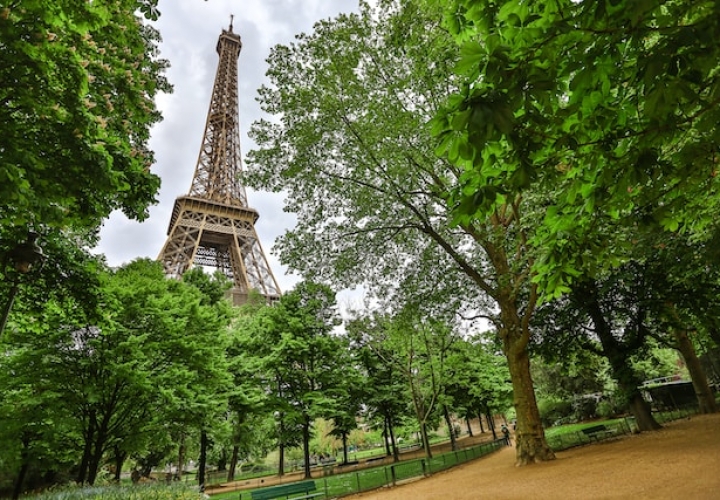
Jessica Roberts
How can European cities become more resilient to higher temperatures resulting from climate change?
Most Read Stories Today
-
Water Scarcity and Artificial Rainfall: The Positive and The Negative Effects of Cloud Seeding, including Health Hazards and Climate Implications.
-
Renewable Energy in Rural Areas: Challenges, Opportunities, and Successful Rural Projects
-
Pakistan's Agriculture at Risk Due to Climate Variability
-
South Africa's Recent Floods: Is Climate Change to Blame?
-
South Korea's floods: root causes and prevention strategies.
-
South Africa: Cape Town, A City Under Fire
-
The Human Cost of Climate Disasters
-
Our Oceans, Our Future: The South African Dilemma of Overfishing
-
Degenerative Impact of Hydrocarbons On The Environment.
-
Sustainable Urban Planning - Copenhagen and the Path to Climate Resilience
The severity and frequency of such events are expected to increase, affecting most of the areas where they occur, with most of the impact occurring in the natural environment, buildings, transport, and water management.
Temperatures are predicted to rise across Europe; projections show notable increases in temperature extremes, increasing the frequency and intensity of heat waves. Cities in the south will experience the greatest seasonal warming happening in the summer, while northern European cities will experience greater seasonal warming in the winter. Under the highest-emissions climate scenario, extreme heatwaves could occur as often as every two years, particularly in southern Europe where a lot of densely populated urban areas exist.
Heatwaves are likely to be more intense in city environments due to the urban heat island (UHI) effect. This is a phenomenon where urban areas experience higher ambient temperatures than outlying rural areas, due to the concentrations of buildings and pavements absorbing and retaining more heat than natural land cover. Nighttime cooling is also reduced, along with elevated air pollution levels contributing to heat-related illnesses. Though heat waves may not be as extreme to witness as fires or flooding, they can be deadly, resulting in more human deaths than any other weather event.
If global temperatures are higher by 3°C by 2100, an estimated 90,000 Europeans could die each year due to extreme heat. The UHI effect increases the risk of heatwaves to vulnerable populations such as the elderly, key facilities such as schools and hospitals are usually located in areas where this occurs. Therefore, housing and other community infrastructure in UHI areas need to be adapted to minimize the effects of extreme heat on the local population.
City adaptations to warmer weather
The building design has a large effect on indoor temperatures. Currently, in temperate areas of Europe, the indoor temperatures between different buildings in the same area may be twice the difference in outdoor temperatures due to differences in architecture and the amount of shading available. Newer buildings that are well insulated against the cold may be more at risk of overheating in summer if shading or cooling measures are not also included. Adaptive measures need to consider human comfort, indoor and outdoor temperatures, as well as energy-saving methods across the seasons.
Green infrastructure can be a highly effective method of helping to reduce high temperatures in cities. The shading and transpiration provided by plants can reduce air temperature and the heat storage capacity of urban surfaces. Larissa, Greece, has been expanding its green infrastructure by exploring green roofs. The maintenance of these structures can be challenging, as the plants must be able to withstand hot summers and cold winters.
Additionally, buildings must be robust enough to support the greenery. The inclusion of green infrastructure is the most effective way of reducing the UHI effect, as shown by a study modeling future heat waves in Porto. Increasing green spaces from 5% to 10% could reduce nearby surface temperatures by as much as 1°C in the daytime. The Paris 2018 climate action plan promoted the creation of urban green and blue (water bodies) spaces, following a severe heatwave in 2003 where an estimated 70,000 people died across Europe.
In 2019, 116 hectares of green roofs and walls were created, 9 ‘green streets’ were built, and 20,000 trees were planted. 1,200 water fountains and four outdoor swimming pools were built. 922 ‘cool islands’ were also developed to provide the public with free access to cooler spaces. These spaces included parks, museums, and places of worship, and ensure that Parisians are all within a seven-minute walk of a cooling island.
The inclusion of white roofs can have a less pronounced but more widespread impact on reducing surface temperatures. Other ways that outdoor thermal comfort can be improved are increasing building heights, since more shade will be provided as well as a corridor to create wind channels. Cool materials can also be used, as they have a high infrared emittance and solar reflectance, incorporated into roofs and pavements.
Indoor thermal comfort in warm weather can be improved by using green and white roofs, combined with building designs that allow for passive cooling and outdoor shading devices. For example, shutters and solar blinds are proven to be effective tools for reducing indoor temperatures, for homes and places of work. Good indoor ventilation is also important in reducing indoor temperatures. In southern Spain, it is estimated that proper use of natural ventilation at night can reduce indoor temperatures by up to 5°C. Active ventilation can be used to cool buildings during the day.
Passive ventilation combined with green roofs could reduce the energy required for cooling by up to 43%. A combination of measures is likely the most efficient way to achieve desired thermal conditions without expending large amounts of energy. A tower block in Rotterdam was newly refurbished with two water tanks supplied by a nearby river. In summer, water is taken from the cooler tank and cools the building. This heats the water, which is stored in the other tank and used to heat the building in winter by the use of a heat pump, the cooled water is returned to the cold tank.

Terms & Conditions
Subscribe
Report
My comments